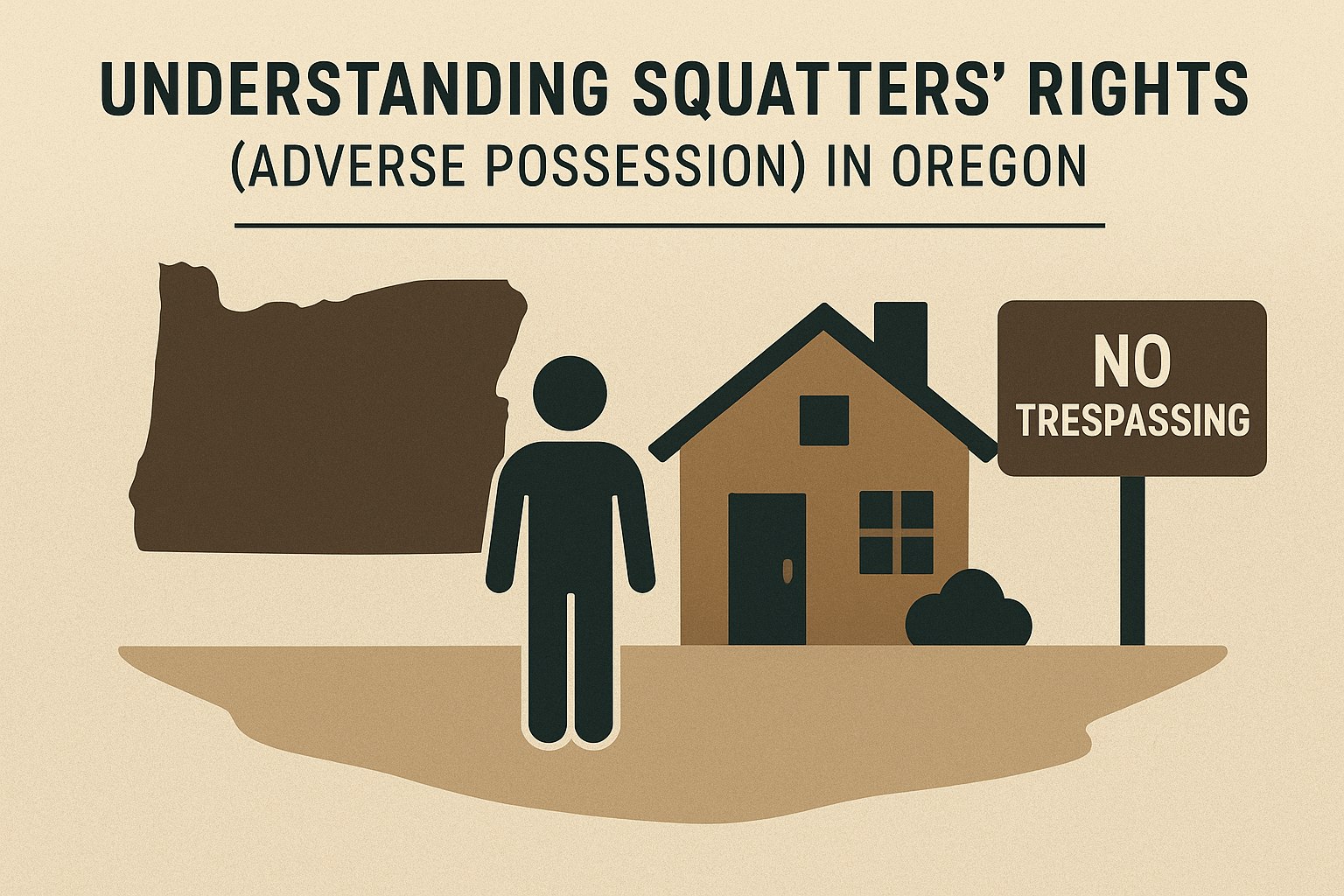AFM NEWS
Can a Squatter Really Take Your Land? What Oregon Law Says

Squatters' rights, or adverse possession, allow individuals in Oregon to gain legal ownership of abandoned or unoccupied property under certain conditions. This principle exists to prevent absentee ownership and encourage land use, but the process is legally complex.
Here’s what you need to know about squatters’ rights and adverse possession in Oregon:
1. The 10-Year Occupation Rule
To claim adverse possession in Oregon, a squatter must occupy the property openly, continuously, and without the owner’s permission for 10 years. This occupation must meet five legal criteria:
- Actual: The squatter must physically occupy the property as a real owner would.
- Open and Notorious: The occupation must be visible to the public and the property owner.
- Exclusive: Only the squatter uses the property, not the legal owner.
- Hostile: The squatter’s possession is without the owner’s consent.
- Continuous: The squatter must live on the property without interruption for the full 10 years.
2. No Property Taxes Requirement
Unlike many states, Oregon does not require squatters to pay property taxes during the 10-year occupation period to claim adverse possession. While not required by statute, paying property taxes can support the claim in court.
3. Proving Adverse Possession
Squatters must gather evidence of their occupation to prove their claim, which can include:
- Dated receipts for property-related expenses (e.g., repairs, utilities).
- Photographs showing the squatter living on or improving the property.
- Testimonies from neighbors or delivery services that can confirm the continuous occupation.
- Official documents, like voting registration or mail delivered to the property address.
Successfully establishing adverse possession requires solid documentation to prove continuous and hostile occupation over the statutory period.
4. Steps for Property Owners to Remove Squatters
Property owners have legal options to remove squatters before they can claim adverse possession:
- Eviction Lawsuit: File a formal lawsuit to have the court evict squatters.
- Written Notice: Notify squatters that they are occupying the property without permission, invalidating any “hostile” claim.
- Securing the Property: Changing locks, installing fences, or posting “No Trespassing” signs can deter future squatters.
5. After the 10-Year Occupation: Quiet Title Lawsuit
Once the squatter has occupied the property for the required 10 years, they can file a quiet title lawsuit to legally transfer ownership. This process involves proving their occupation to the court, and the original property owner can contest the claim. A real estate attorney is often needed to navigate this legal action.
6. Risks of Adverse Possession
Adverse possession can lead to costly legal battles, especially if the original property owner disputes the claim. Squatters face significant risks, including retaliation from the property owner and the potential to lose their claim if they vacate the property for even a short period during the 10 years.
7. Preventing Squatters
To prevent squatters from establishing adverse possession, property owners should regularly monitor vacant properties, secure access points, and take swift legal action at the first sign of unauthorized occupation.
Conclusion
Oregon’s adverse possession laws allow squatters to claim ownership after 10 years of continuous, exclusive, and hostile occupation. While squatters are not required to pay property taxes, they must provide substantial proof of their occupancy. Property owners should remain vigilant in protecting their property from squatters, while those seeking to claim adverse possession should consult legal counsel to ensure they meet all legal requirements.
Understanding these nuances can help both squatters and property owners navigate Oregon's adverse possession laws effectively.

